Since I’m generally adverse to toiles, I live for fit notes from fellow sewers; the thing is, I find they often contain modifications which can make interpretation tricky. Since I just went on a pants-sewing bender making four patterns in the same, unmodified numerical size, I imagined this baseline for comparison could prove helpful to others who also prefer research over muslins. My goal here is to share about how the sizes that I chose fit my body, and while I mention some design differences, this is by no means a design comparison. All of these pants are drafted very differently!
In addition to fabric choice, I want to note some other factors that are relevant to the achieved fit. First off, I prepared all of the fabrics by laundering, heat drying, and steam ironing prior to cutting. For the straight waistbands (all except that of the Coe Trouser), I cut a size up to ensure enough length should there be any stretching of the waist area. (This means that the waist could’ve become a touch larger than drafted.) Finished garments were then washed and tumble dried. Otherwise, I always aim for precision when cutting and sewing to ensure the fit is as accurate as possible. Lastly, all photos included show the pants after having been laundered, lightly worn, and then fluffed in the drier to de-wrinkle.
My Size
My current measurements include a 29”/73cm waist and 39.5”/100cm hip at 5’5”/165cm height. To be more nuanced about my shape, I fill more space from front-to-back (side view) with a tummy pooch and full bum, than side-to-side (front view).
On the Anna Allen Clothing size chart, my measurements are closest to a size 8, whereas I’m nearest a size 6 on the Daughter Judy Patterns chart. I’ve always chosen to size down by one in Anna Allan pants, so I sewed the Persephones and Helenes in a 6. Based on my experience with a previous pair of Daughter Judy trousers, I chose the recommended 6 for the Coes and Worships.
Persephone Pants
Size 6 | no mods
Again, the Anna Allen size chart puts me nearest a size 8, but as I like these to fit snugly, I sewed a 6. For this pair, I used a 10 ounce, 100% cotton denim which I suspected would relax a touch—and it did. Because these started off quite fitted, the slight relaxing of the fabric provides just enough ease to be comfortable without bagging out. The interfaced waist band doesn’t really stretch, but allows for just enough room to comfortably sit and eat.
When I sew these again, I won’t change a thing. If I wanted something more relaxed, however, an 8 would also work.
Helene Jeans
Size 6 | 34” inseam | straight leg view | no mods
I’d read that the Helene Jeans are slightly more relaxed than the Persephone Pants and found this to be true for the hips and seat, but less relevant to the waist. I chose a 12 ounce brushed denim of 100% cotton which felt substantial yet soft.
Hot off the press, they were gently fitted in the hips and waist and seemed to fit me as intended based on the designer’s marketing images. (Remember that I sized down about one size per the chart). After a day of wear, the waist barely changed in size while the hip and upper thigh eased up moderately. I’d seen a few mentions of these having excess fabric in the font crotch region, but I didn’t notice any fit issues there.
If I wanted more of a Persephone Pants fit, I could probably grade down in the hips with this particular fabric. Had I sewed my size per the chart (an 8), I’d expect these to be nearing a slouchy look by end-of-day. Personally, I love the straight leg view one size down and won’t change a thing for my next version.
Coe Trousers
Size 6 | no mods
I sewed these in a 7 ounce, fine weave canvas of 100% cotton. I had made a previous pair in a size 4, and while I could get them on, they felt too tight in the waist, hips, and crotch curve. I figured sewing a size up (my recommended size) would rectify these issues, but unfortunately, I could still use some vertical room in the crotch—especially when seated.
During wear these do ease up a bit, allowing the waist to sit lower and resulting in more vertical crotch room. This makes me wonder if they sit higher on my waist than intended. An anatomical factor could be my lower belly shape keeping them from slouching more. Another consideration is that I included full pocket stays, and while I really like the additional support that these offer, I suspect they keep the fabric from opening up as much as it normally would while wearing.
When I make these again, I’ll add ½” to the front and back rise at the adjustment lines and perhaps extend the back crotch curve an additional ¼.”
Worship Jeans
Size 6 | tapered view | no mods
I sewed these jeans in a very sturdy 13 ounce, 100% cotton denim. Directly following the Helenes, what struck me most was the curved hip shape of the Worships compared to the straight, selvedge-friendly hip of former. While I really like the shaping of the seat (#daughterjudybooty is real here), the hip curve may be a touch more pronounced than I need as most of my hip measurement comes from my bum.
Right after sewing, I found these to be gently fitted, except with more back waist gaping than I’d prefer. (Side note: I’ve actually learned to ignore a small amount waist gaping from newly-sewn pants. A rookie mistake is to over fit at this stage, when subsequent laundering and wearing usually reduce some of this.) I chose to leave as-is, and sure enough, another wash and dry mostly corrected things. After a day of wear, the fabric relaxed moderately.
When I sew the tapered version again, my only modification will be the removal of a ¼” wedge from the center back seam, for a total waist reduction of ½.” If I sew the flared view, I’ll consider sizing down for that Dazed and Confused fit.
I’d say all of these pants fit me well and I’ve already worn each pair multiple times. In the waist and hips, I find the Persephone Pants to be the most fitted, followed by the Helene Jeans and Coe Trouser (perhaps due to the pocket stays), and then the Worship Jeans. All said, I’m more apt to size down in pants from Anna Allen Clothing than from Daughter Judy Patterns.
And finally, please remember that this is my personal experience and fit could vary based on multiple factors.




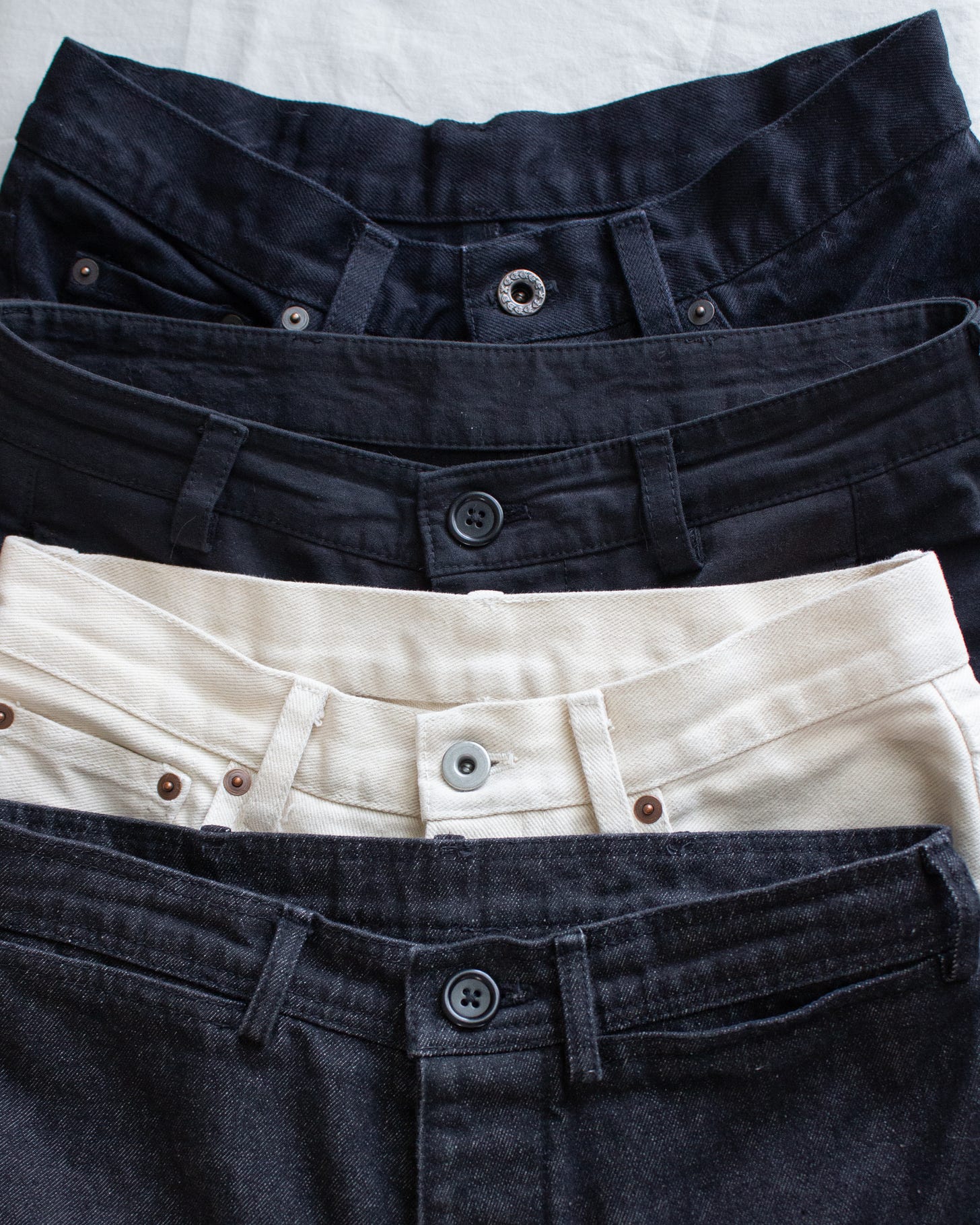
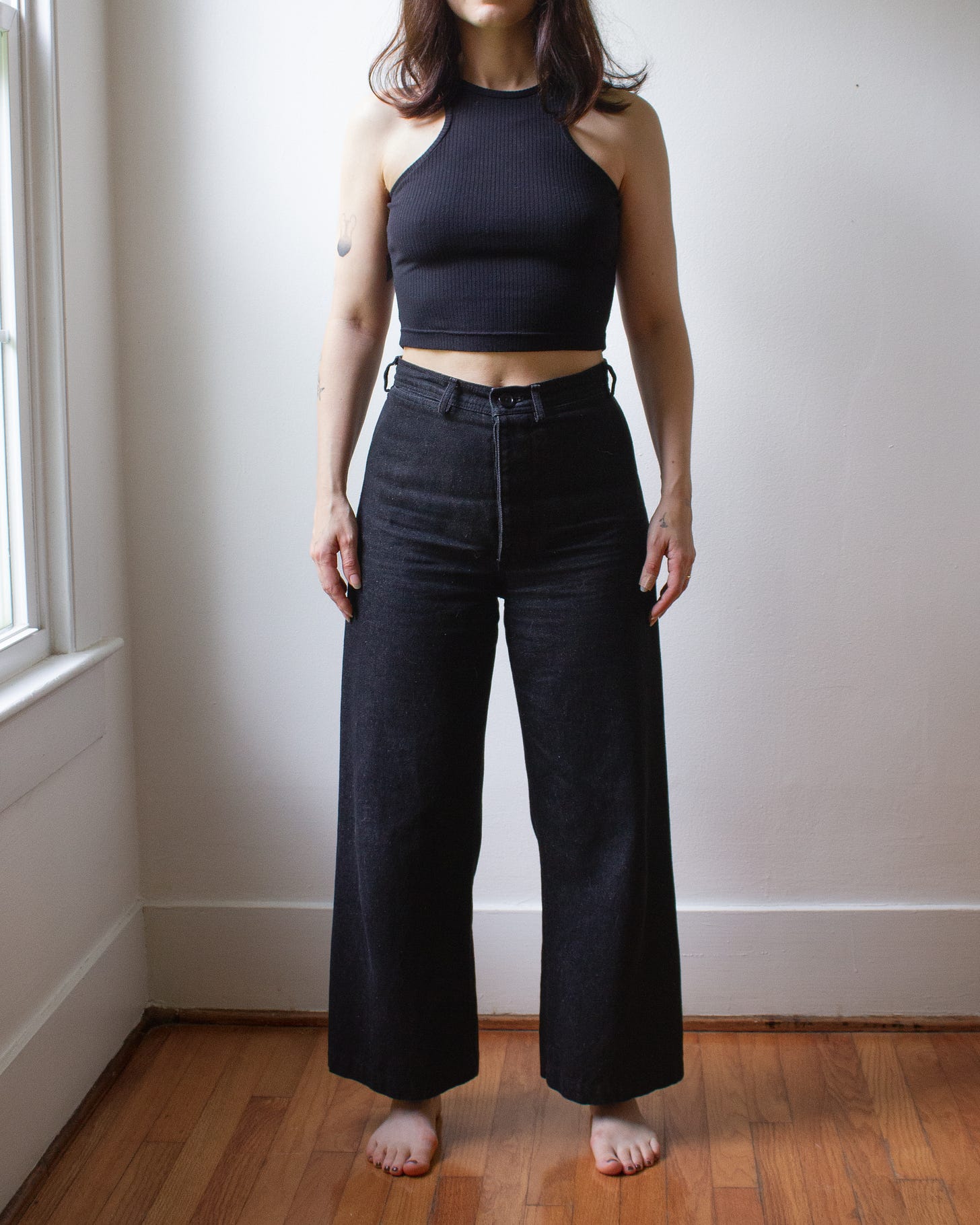
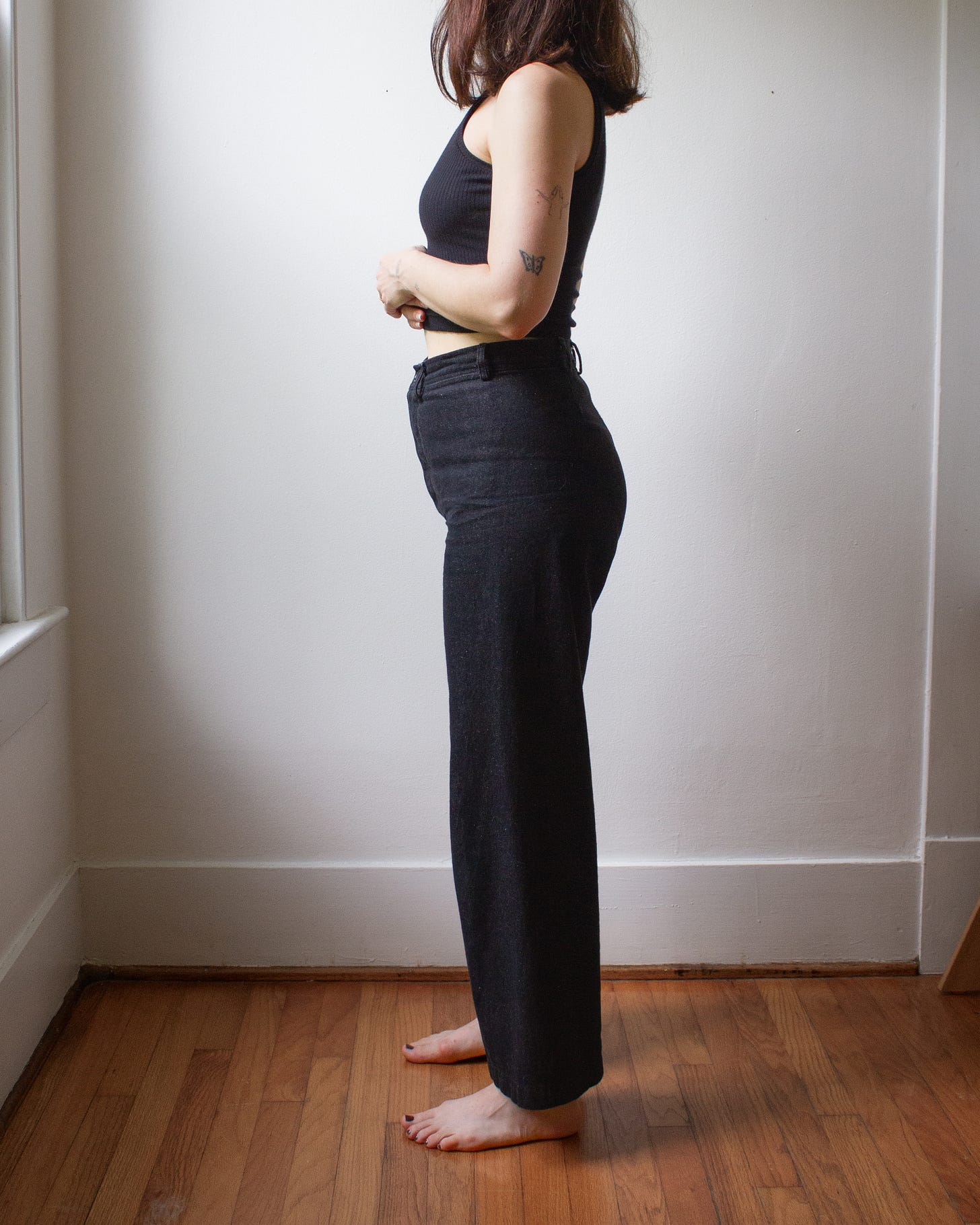
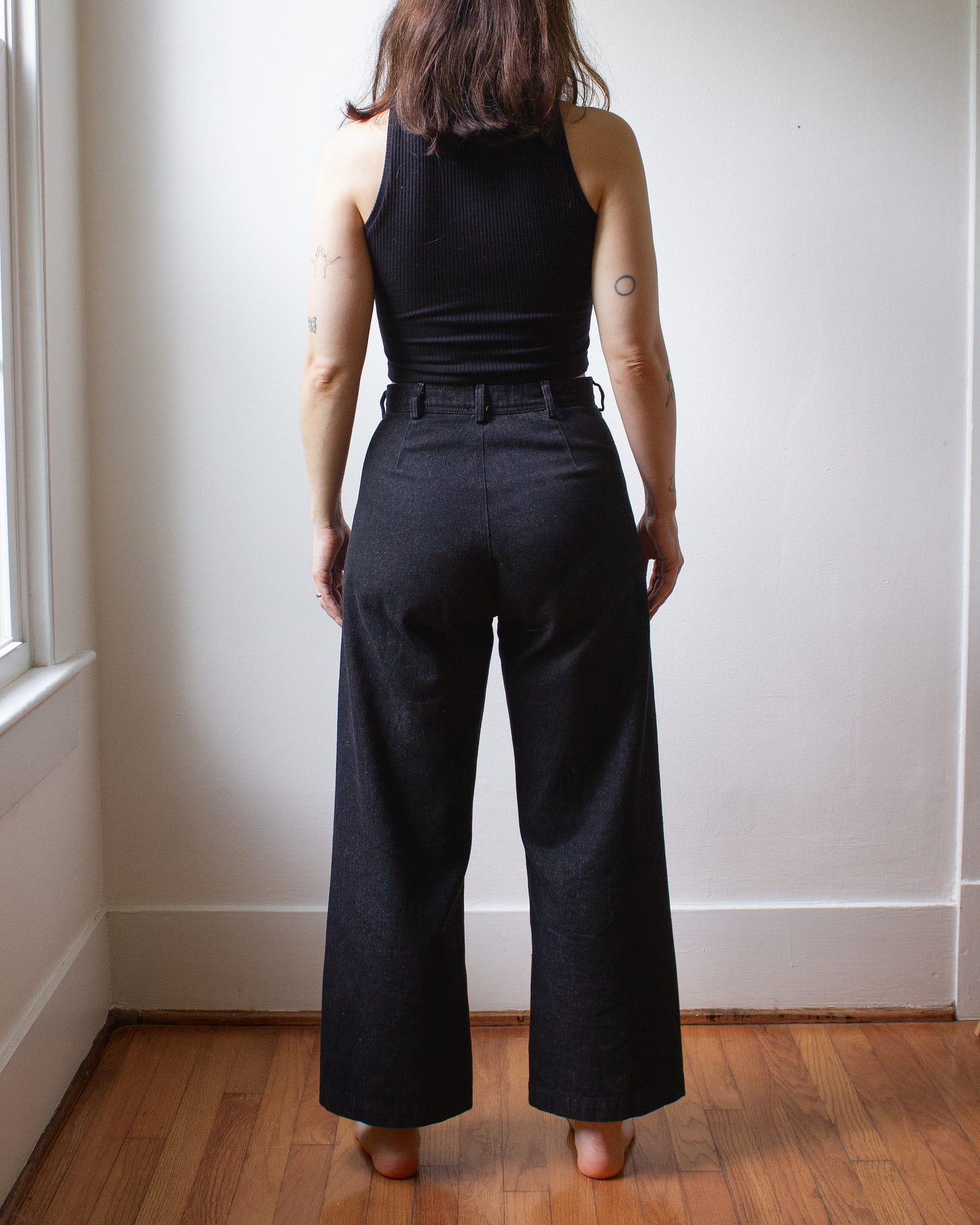
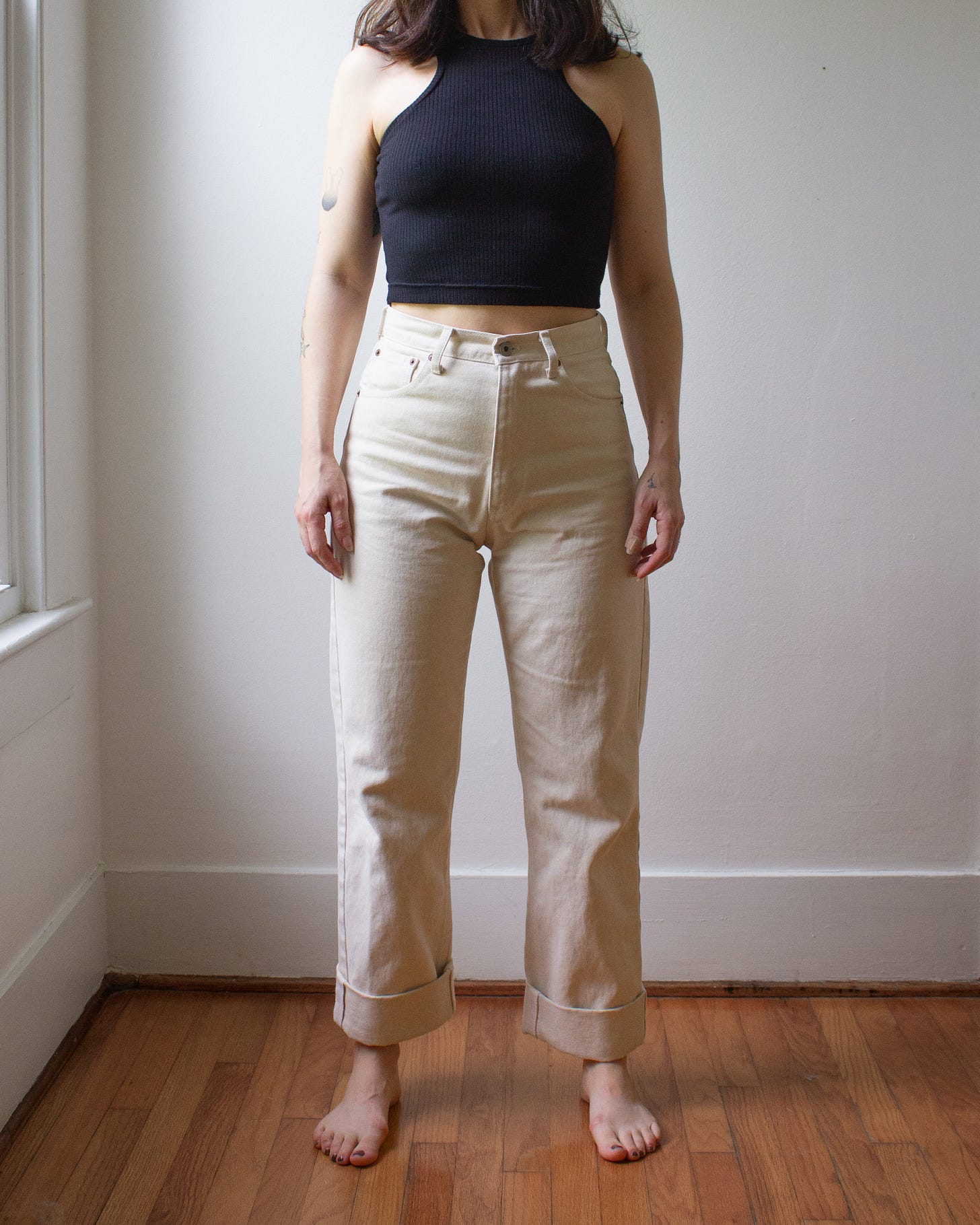
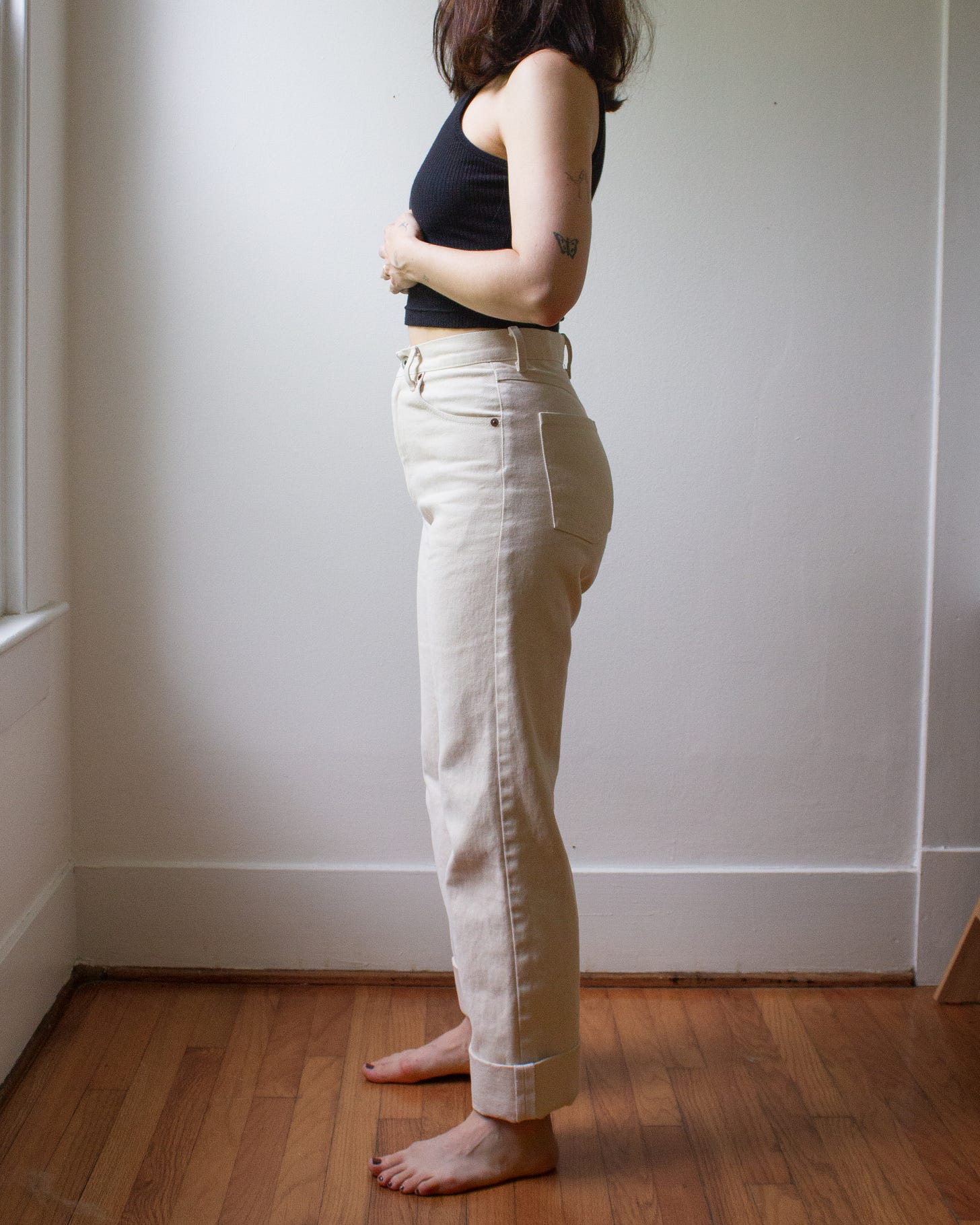

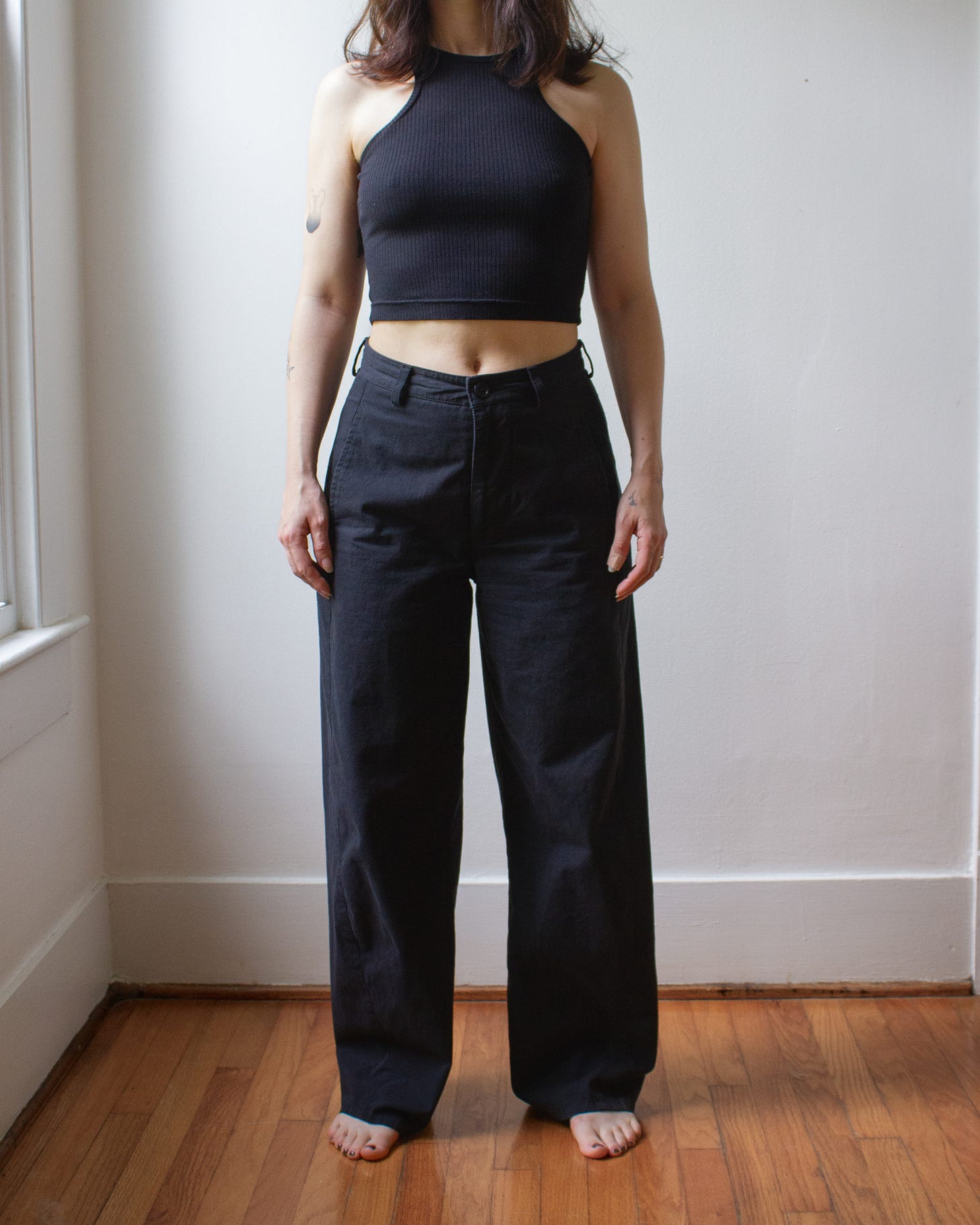
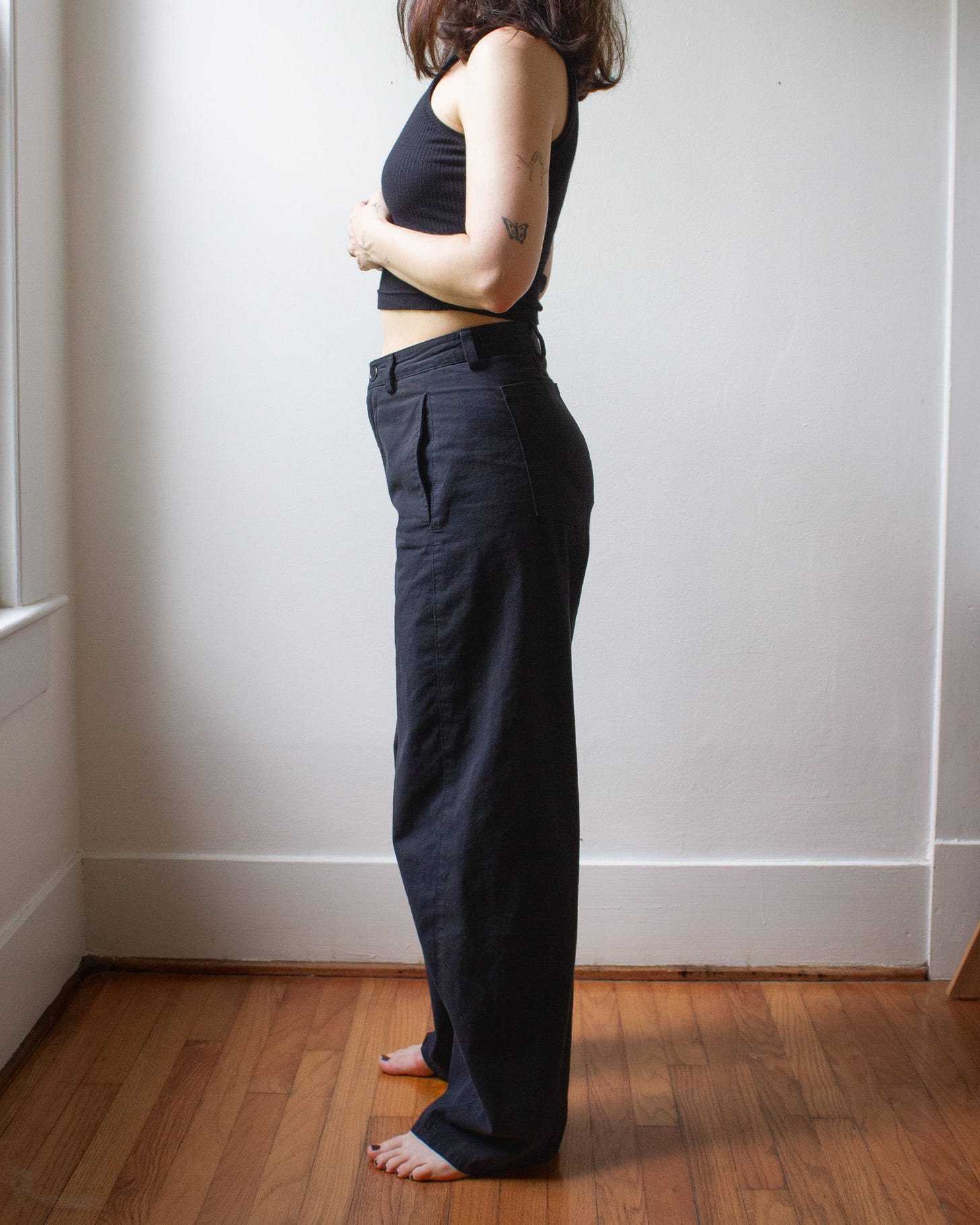
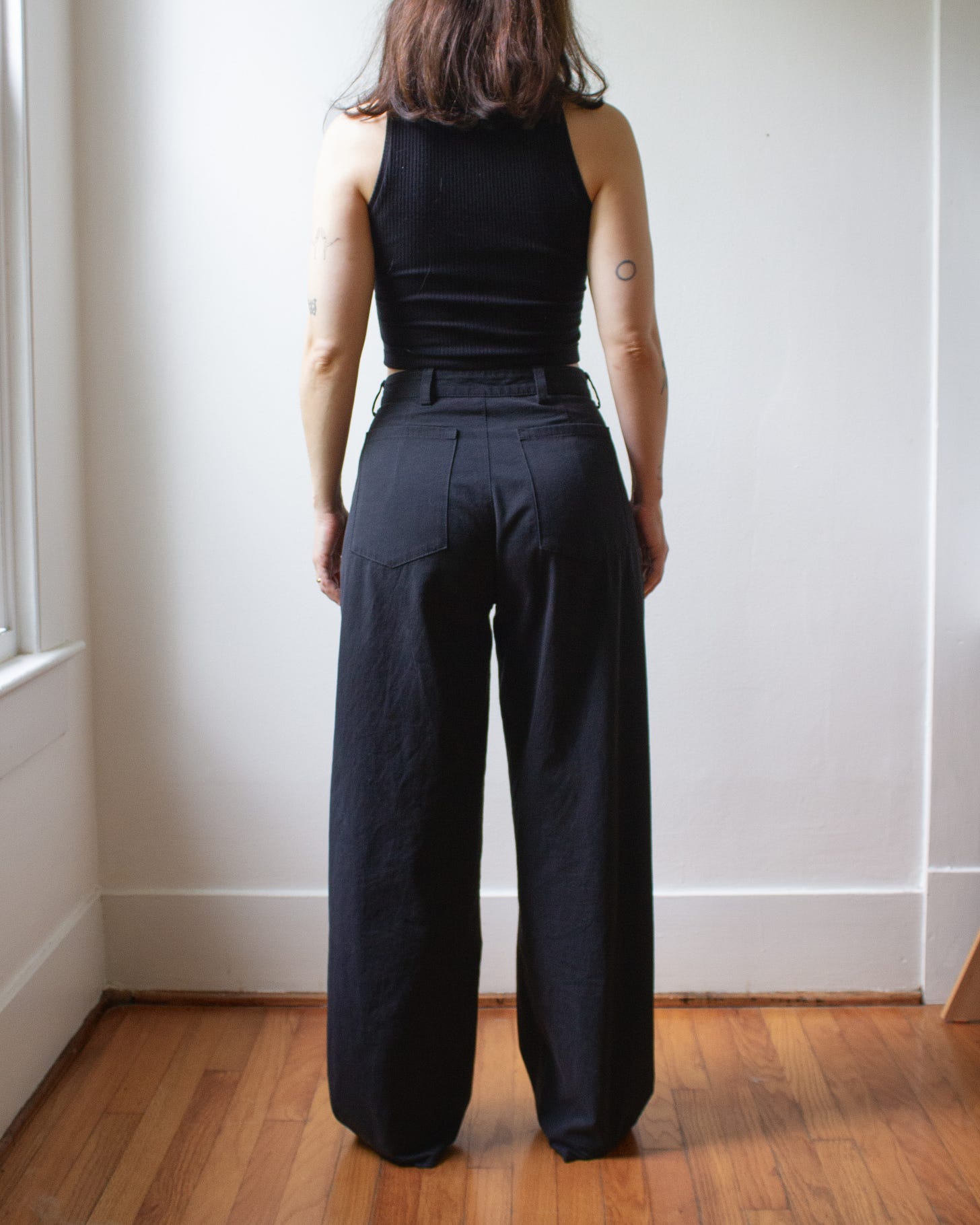
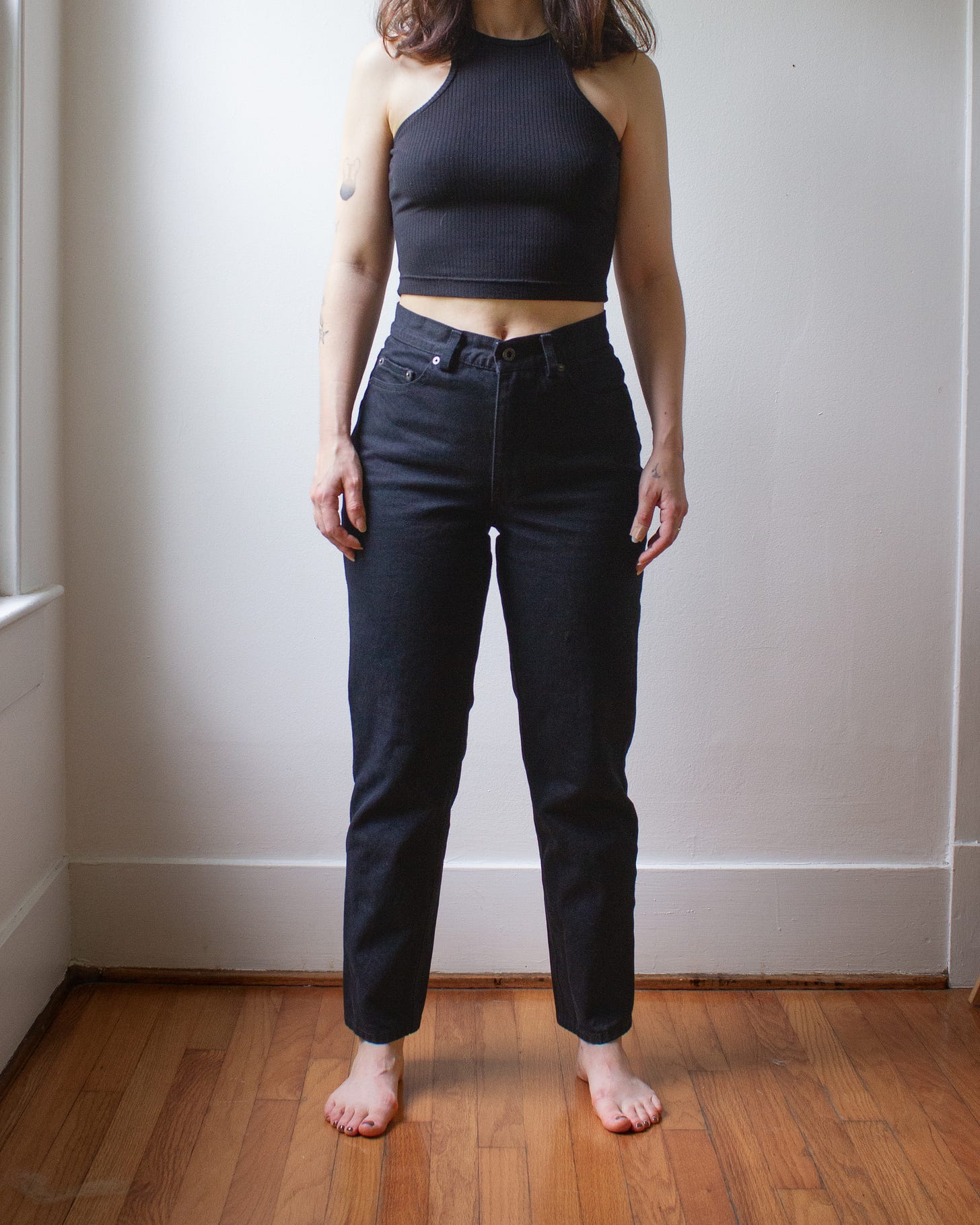
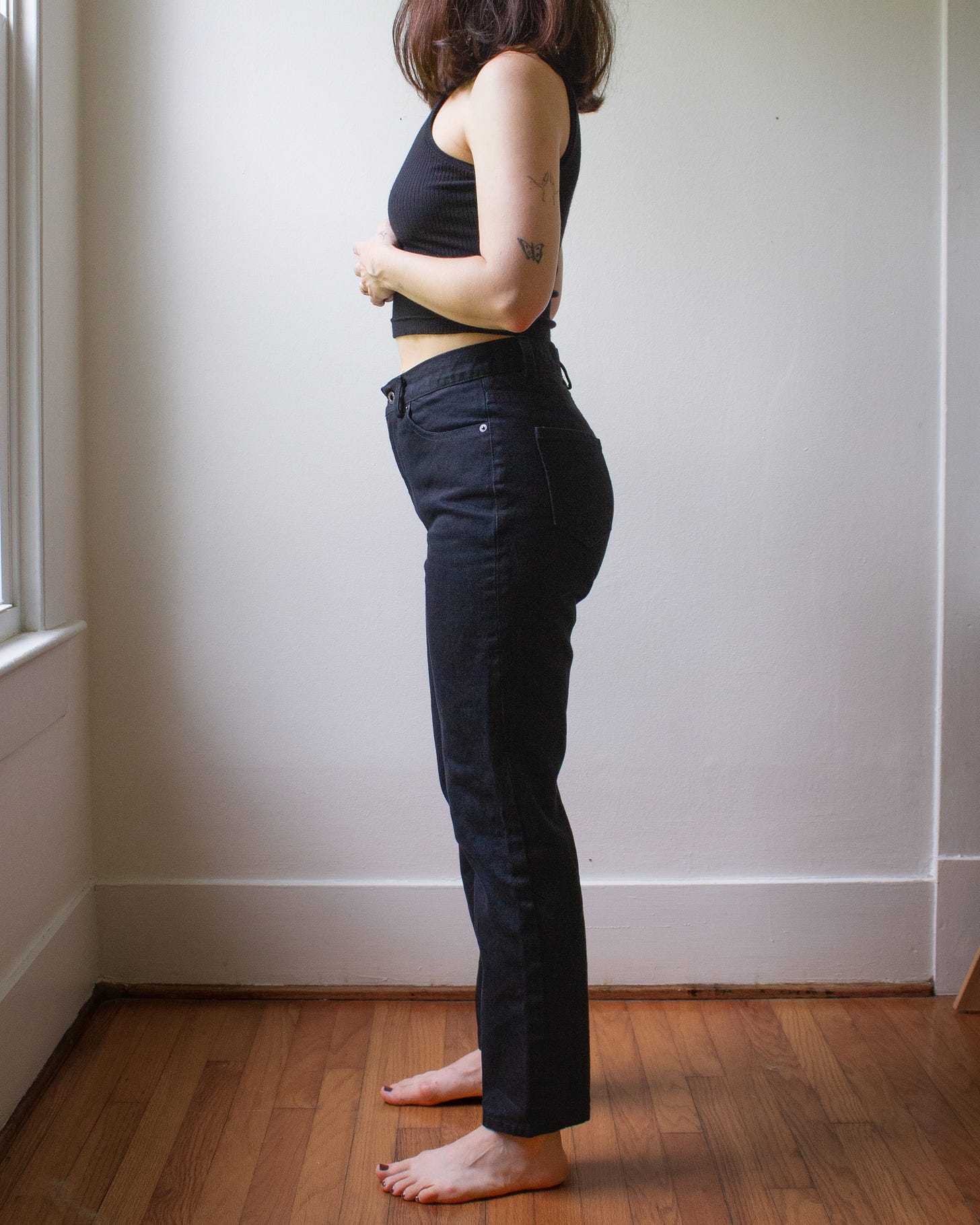
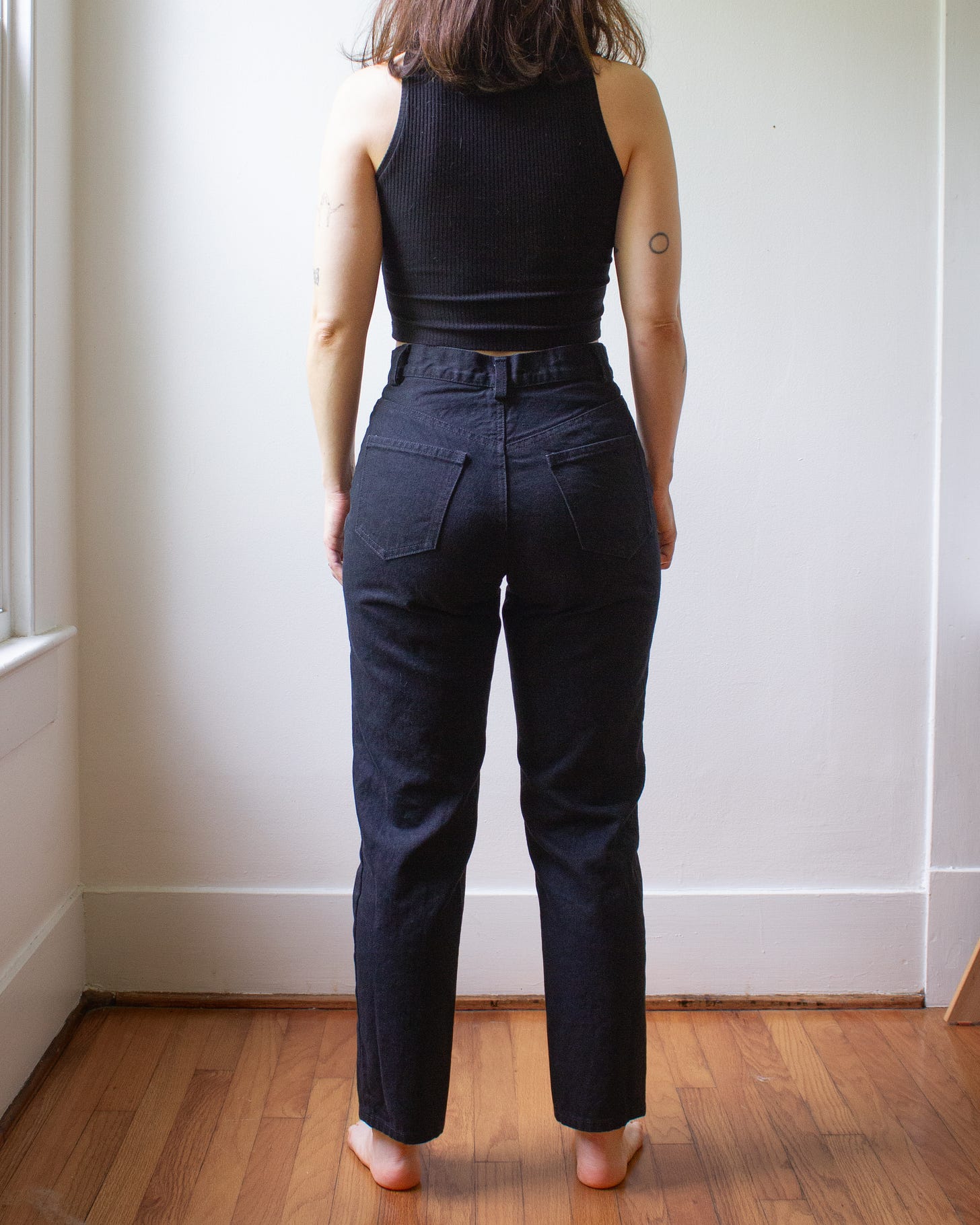
I really appreciate your analysis of the patterns. I really avoid muslin making and rather research other makers and measure my body against the pattern and finished garment measurements. In my embarrassing amount of hours spent looking at makers projects on IG - I have wondered if those who do a lot of modifications end up with a garment that has lost some of the intended design. I’ve noticed with some makers, it’s hard to tell the difference between patterns and rather the pants look very much like the maker’s personal style. That being said- as you mentioned some alterations are critical for fit. A bit of an art and science. Thank you!
This is great! Thank you for this--its going to be super useful for me as I begin to sew a few of these. I have a quick question re the side view of all of the pants except Helene . So, the front waist sits lower than where the back waist sits--is this on purpose? the way they are to fit? or by choice? I may not very little about pants making so I hope the question makes sense. Thanks.